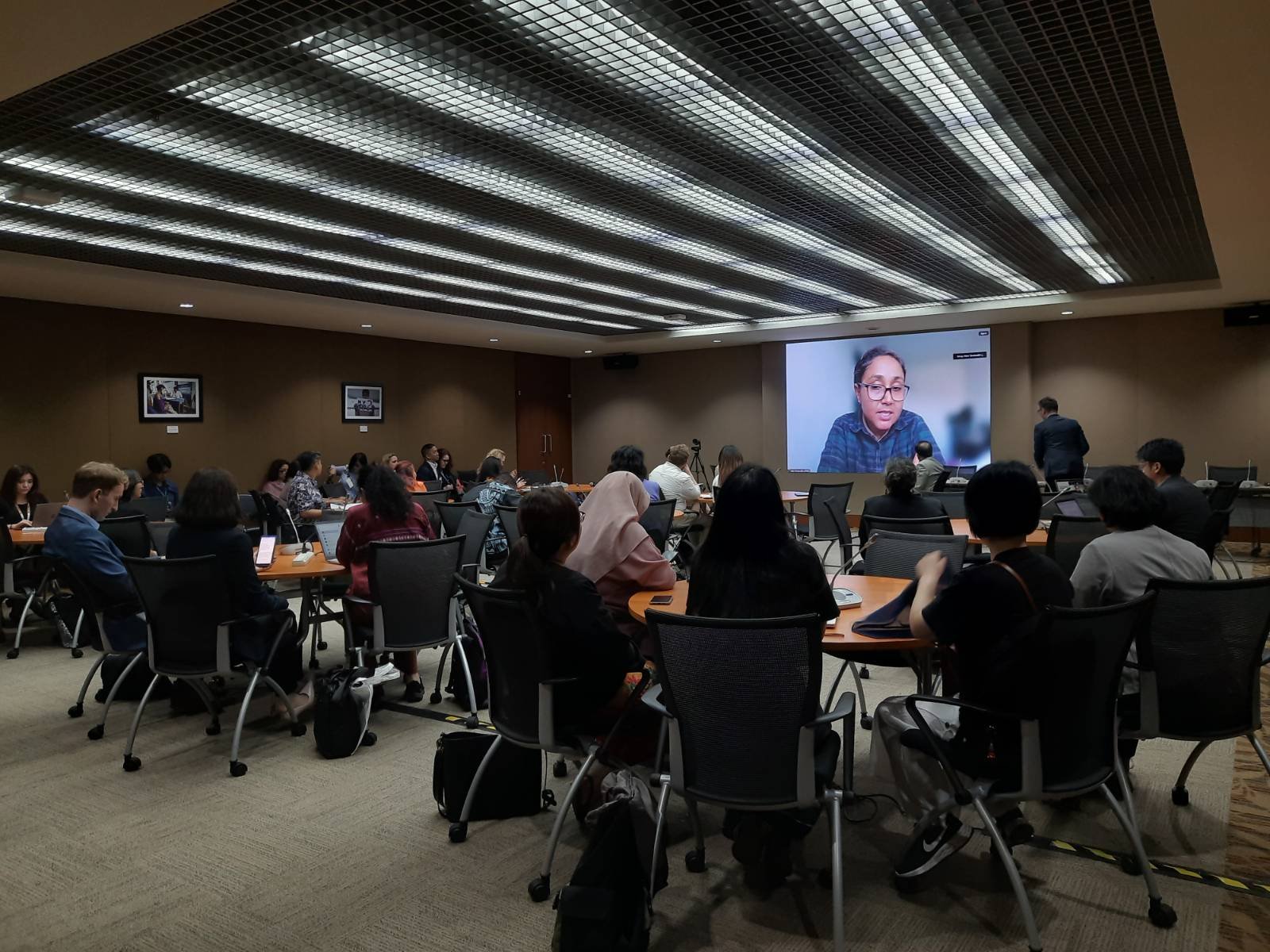Advocating Grassroots Migrants’ and Refugees’ Indicators in the GCM
Side Event During the Second Regional Review of Implementation of GCM
On February 4, 2025, the Asia Pacific Mission for Migrants (APMM), Asia Pacific Refugee Rights Network (APRRN) and Asia Pacific Forum on Women, Law and Development (APWLD) have successfully conducted a hybrid side event during the Second Regional Review of implementation of Global Compact on Safe, Orderly and Regular Migration (GCM) in Bangkok, Thailand. The side event gathered more than 30 in-person participants and 15 online participants, coming from migrants, refugees and advocacy organizations, UN agencies, academe and member states.
Speakers of the side event come from various backgrounds. The first speaker, Eni Lestari, was a migrant domestic worker, member of Asosiasi Buruh Migran Indonesia (ATKI) and chairperson of International Migrants Alliance (IMA). The second speaker, Hafsar Tameesuddin, is co-secretary general of APRRN, a social worker and a Rohingya activist. The third speaker, H.E Faiyaz Murshid Kazi, is the ambassador of Bangladesh to the Kingdom of Thailand. And the fourth speaker was Izza Leghtas from OHCHR, who works on migration and previously has worked on refugees and mixed migration. The side event was facilitated by Klaus Dik Nielsen of APRRN.
In his opening, Rey Asis mentioned a migrant and refugee workshop that happened last November, which was attended by migrants, refugees, advocates, feminists, trade unionists, and service providers, to develop migrant and refugee-centered indicators to the GCM. He said that the idea of the side event revolved around the experience of migrants and refugees coming together to talk about how the GCM is able (or not able) to address issues of migrants and refugees. He also mentioned the migrant and refugee indicators in the GCM as a measure to see how effective it would be in addressing the situations of migrants and refugees.
In her presentation, Eni Lestari emphasized the right to meaningful participation for migrants. Eni explains that meaningful participation is not about tokenistic participation or quantity of participants involved. Rather, she asserted, “It doesn’t matter if there are many people in the room coming from the grassroots, at the end of the day, if the policy of the government is not answering to migrants’ and refugees’ issues, that means meaningful participation has not yet been achieved”.
Hafsar Tameesuddin appreciated the innovative thinking to look into shared struggle, vulnerabilities and opportunities among migrants and refugees. However, they lamented a recent executive order, forwarded by the Trump administration, to freeze foreign aid that will serve the needs of refugees and migrants. Hafsar said, “It’s affecting many of us, people are now scared, worried and concerned, what’s going to happen next to the refugees, stateless people and migrants in the region?”. For Hafsar, it is the more reason for migrants and refugees to come together, look into their shared struggle, values and opportunities to collaborate.
From the government side, H.E Faiyaz Murshid Kazi expressed his interest and appreciation of the migrant and refugee indicators. He said that the indicators help in concretizing the GCM, as well as making it clearer for individuals and groups engaged in migration. He said, “although I haven’t looked at the entire list, you managed to cluster the indicators into seven categories which looked very much pertinent, and the two speakers before who share some of their lived experience kind of attest to the relevance of all these seven clusters”. He is sure that other governments would be willing to take a look at it.
Izza Leghtas highlighted the importance of intersections in terms of categorizing people on the move. She expounded, “there are people who fit the definition of refugee, migrant workers, victims of trafficking, at lots of the time, are the same person”. She explains that people on the move fluidly fit into different categories – confronting different profiles at different times or at the same time. She highlighted some common challenges related to the overlapping identities of migrants and refugees such as immigration detention, discrimination in accessing services, and harmful narratives around the issues of migration. She also emphasized the importance of working together in advocating these issues using international human rights law, treaties and instruments.
During the open forum, participants and speakers engaged in a good discussion in which some participants positively expressed their interest to be part of using the indicators as advocacy tools. The side event was concluded with a closing remark from Aliza Yuliana, stating that the migrant and refugee indicators can be a living document that continuously can be improved and used for advocacy. She also spotlighted that the indicators can be used by migrants, refugees and civil society in monitoring the implementation of the GCM and other migration related policies, as well as building their capacities and awareness.

